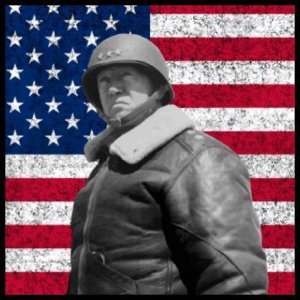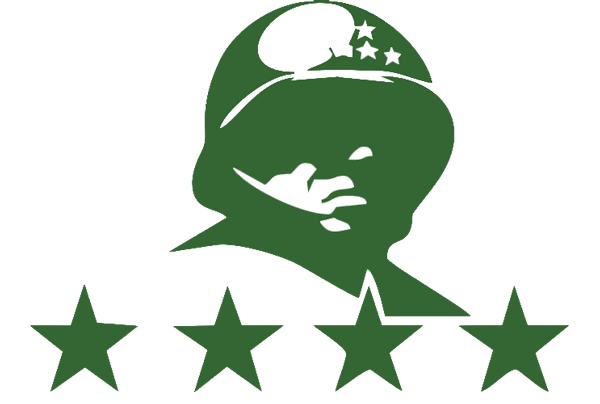About
History of the Desert Training Center
GENERAL PATTON AND THE DESERT TRAINING CENTER
“The Desert is a killer, and we must acclimate our soldiers to the climate.” -General George S. Patton Jr.
In February 1942, the U.S. Army assigned General George S. Patton Jr. to advance desert tank warfare and train U.S. soldiers for combat under the harshest desert conditions possible.
In early March General Patton and his staff surveyed the southwestern United States and established the boundary of the Desert Training Center. It encompassed 18,000 square miles of rugged, desolated and largely uninhabited lands within the Mojave and Colorado Deserts in California, Arizona and Southern Nevada.
Patton established the headquarters for his base camp near Shavers Summit (now Chiriaco Summit), 25 miles east of Indio. The Army named his headquarters Camp Young, after Lt. General S.B.M. Young, the Army’s first Chief of Staff. He identified sites for 12 divisional camps within the Desert Training Center: Camps Essex, Clipper, Coxcomb, Iron Mountain, Ibis, Granite, Rice Airfield and Pilot Knob in California; and Camps Bouse, Horn, Hyder and Laguna in Arizona. He established auxiliary camps, including hospitals, medical units and supply depots, and arranged communication logistics with local and regional telephone companies. Patton located the camps near major roads such as Route 66 and railroad communities to transport troops, equipment and supplies. He also coordinated with the Union Pacific Railroad in the North, the Santa Fe Railroad in the center and the Santa Fe and Southern Pacific Railroads in the South to build additional spurs and lines to facilitate shipment of troops and supplies.
Where possible, Patton located camps near the Metropolitan Water District aqueduct to provide his troops water. For camps Ibis and Essex located away from the aqueduct, the Army built 500,000 gallon reservoirs. Other water sources included the Colorado River, private wells and municipal water sources.
Patton established five major airfields where America’s young pilots would learn to fly. Landing strips also were built near each camp to bring in supplies.
Conditions were primitive- no barracks or running water. Winter temperatures could vary from 100 degree F at noon to below freezing at night. Summer temperatures could reach 130 degree F in the shade and could average 150-160 degree F inside the tanks. The perils of flash floods, sand storms, snakes and scorpions would further push soldiers to their limits of endurance.
General Patton
Patton served as the Desert Training Center’s first Commanding General, but his tenure was short. In July 1942, he was called to Washington to help plan Operation Torch, the invasion of North Africa. He then led U.S. troops in some of the most decisive Allied Victories in World War II.
 Information Provided by:
Information Provided by:
U.S. DEPARTMENT OF THE INTERIOR
BUREAU OF LAND MANAGEMENT
History of the Museum
MISSION
The General Patton Memorial Museum was built to inspire such reverence through exposure and education. Quality of life for each visitor is directly tied to the health of this nation and we strive to ensure each visitor leaves the museum with a renewed understanding of that. We are committed to providing a place to learn about preserving the past and ensuring the lessons it teaches us are carried to future generations.
The name General Patton was selected because he had actually handpicked the site and was the first commander of the DTC with Camp Young as the headquarters for the Desert Training Center, eventually training over a million men to go into the WWII effort. This became the world’s largest military installation both in size and population stretching from Arizona to Nevada to California. Leslie continues to work for the BLM and resides now in Colorado, and Margit lives at Chiriaco Summit and continues to serve as an active supporter of the museum.
 The first year was spent organizing and trying to find locations to house and process the artifacts that began to come to the address. The BLM had a mobile home that became the first office and repository for information and artifacts. Senator Presley helped the museum to obtain the old Coachella DMV office which was moved to the site at Chiriaco Summit. The land was donated by Joseph L. Chiriaco and Ruth E. Chiriaco, pioneers of the area. In 1986 five more modules were purchased creating a 7000 square foot area to serve as the museum building. Construction began in earnest in 1987 with a solid team of retirees from SCE headed by Jerry Rusche. This group of men worked long and hard creating the interior spaces of the museum, cleaning up and modifying the spaces, installing new electrical, refrigeration, heating and everything else that went into the interior space, as well as overseeing the exterior plastering of the building. The rock was donated by the Whitewater Rock and the Sea Bees were the volunteers, who installed the rock one summer.
The first year was spent organizing and trying to find locations to house and process the artifacts that began to come to the address. The BLM had a mobile home that became the first office and repository for information and artifacts. Senator Presley helped the museum to obtain the old Coachella DMV office which was moved to the site at Chiriaco Summit. The land was donated by Joseph L. Chiriaco and Ruth E. Chiriaco, pioneers of the area. In 1986 five more modules were purchased creating a 7000 square foot area to serve as the museum building. Construction began in earnest in 1987 with a solid team of retirees from SCE headed by Jerry Rusche. This group of men worked long and hard creating the interior spaces of the museum, cleaning up and modifying the spaces, installing new electrical, refrigeration, heating and everything else that went into the interior space, as well as overseeing the exterior plastering of the building. The rock was donated by the Whitewater Rock and the Sea Bees were the volunteers, who installed the rock one summer.
The foundations were constructed and donated by Modern Alloy. The engineering for the facility was donated by the firm of Krieger and Stewart, and the legal work was done by Joe Aklufi. Corky Larson, Riverside County Supervisor also played an important role in the project. The first really professional exhibit was the MWD topographical map – the map shows the vast regions of Southern California where the massive aqueduct was installed bringing the much needed water to Los Angeles.
The availability of water to the DTC is the main reason that Patton selected the area for the DTC and placed the camps accordingly. This is aside from the fact that this desert area so mimicked the areas of North Africa and he could train the men in these harsh conditions preparing them for their eventual service in the war.
During the building process, personalized engraved bricks were sold to finance parts of the project that just could not be donated. Today there is a large wall area covered with bricks, both large and small which are still being sold and installed. Over time, the museum was beginning to look like a large building and with fervent prayers and many hours of volunteer service, and the museum was ready to open on November 11,1988 at 11 in the morning, coincidentally Patton’s one hundredth birthday.
A crowd of over 5000 attended the opening, the outdoor concrete area barely dry, and the rest is history…
